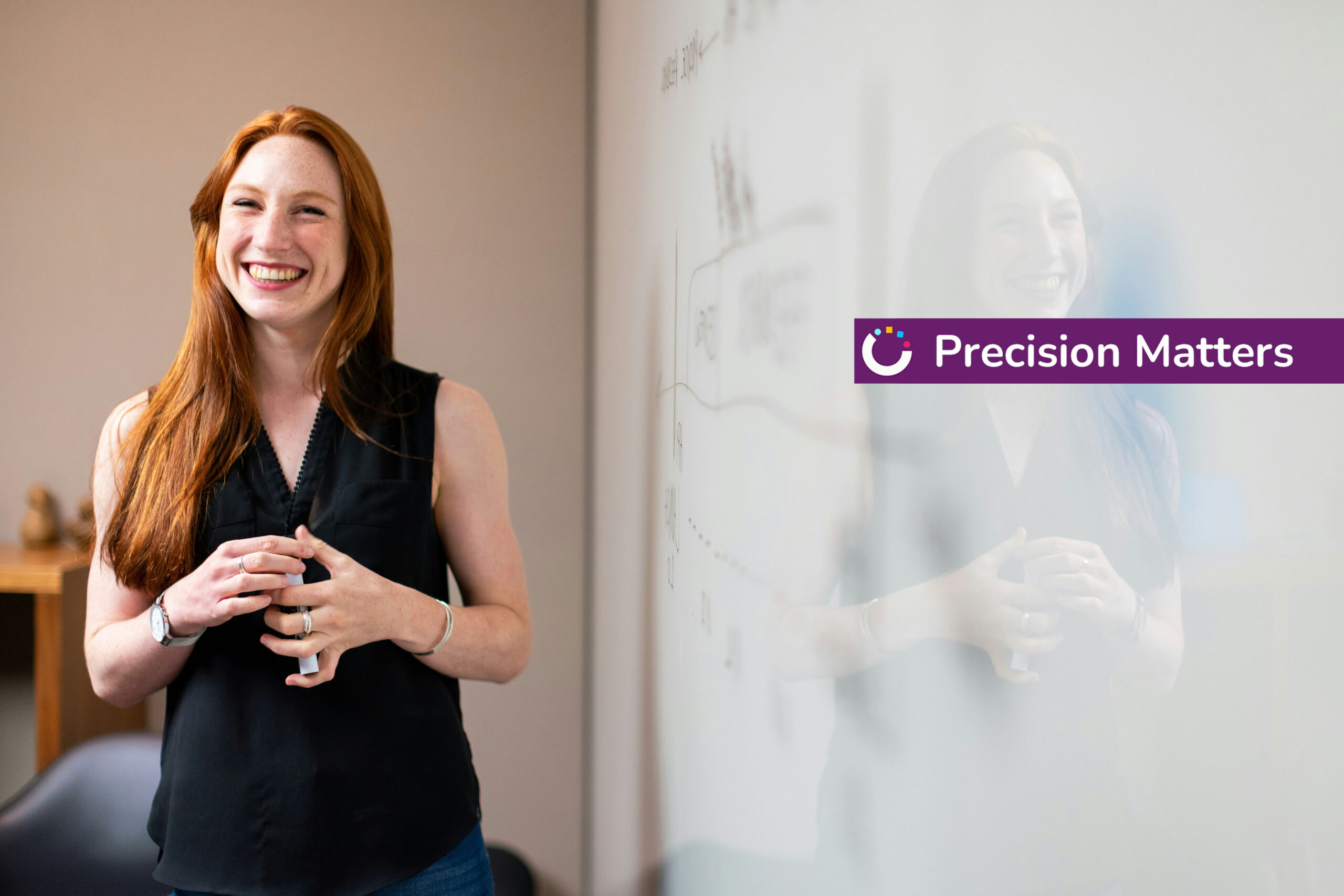From Data to Development: Tailoring Talent Development for Individual Fulfillment

As a former Chief Learning Officer with a career that took an unconventional route from the business side to HR later in life, I’ve always had a penchant for driving outcomes and using data to inform decisions. My journey has taught me the transformative power of aligning talent development with business strategies—a principle that has become the bedrock of my approach to fostering environments where individuals and organizations thrive.
Delving into ancient wisdom and its teachings was a pivotal moment in my life journey. The commonalities across the great ancient wisdom traditions were startling, leading me to develop a diagnostic tool based on seven themes that consistently emerged. This tool, now having been utilized by hundreds of individuals, allows for statistical insights into what drives happiness and fulfillment. The beauty of this diagnostic is its ability to cater to the individuality of each person, offering a path that is as unique as they are.
In the pursuit of understanding what drives human happiness and fulfillment, my exploration into ancient wisdom traditions has distilled into seven core themes that are statistically correlated with happiness. These themes represent universal truths echoed across various cultures and philosophies, offering a blueprint for well-being that is as relevant today as it was millennia ago. They include:
- Living in the Now: The importance of being present, focusing on the current moment rather than dwelling on the past or worrying about the future. This theme emphasizes mindfulness and the power of now as a foundation for contentment and peace. In the workplace, this translates to a sense of flow that leads to both greater happiness and higher productivity.
- Self-Love and Compassion: Encouraging an attitude of kindness towards oneself, recognizing one’s worth, and treating oneself with the same compassion one would offer to others. This involves silencing the inner critic and fostering a positive self-view. This helps to make employees more resilient in the face of inevitable workplace challenges.
- Understanding and Utilizing One’s Talents and Potential: The recognition of one’s unique abilities and the pursuit of activities that align with these strengths. It’s about knowing what you’re good at and finding ways to use those talents meaningfully. This has significant value in the workplace as it is where most people find opportunities to use their talents, either in their existing roles or in their career development path.
- Pursuit of Purpose and Achievement: The drive to find and engage in work or activities that feel meaningful and fulfilling. This theme stresses the importance of having goals that resonate with one’s values and making progress toward them. Well-designed goals that drive organizational results and steady, incremental achievement for the individual also lead to happier employees and more productivity.
- Resilience and Growth from Adversity: The ability to bounce back from challenges and grow stronger. It highlights the value of facing hardships with courage and using them as opportunities for personal development. This is where learning plays a crucial role: the most adaptive and thriving employees level up from each setback, a skill that can be trained and modeled by leaders.
- Creating and Sustaining Relationships: The significance of fostering deep, meaningful connections with others. This theme underscores the idea that happiness is deeply intertwined with our relationships and sense of belonging. Developing deep and productive relationships is another often overlooked aspect of organizational performance and human happiness.
- Freedom from Oppression: Advocating for a life where one is free from undue control, stress, or oppressive situations. It’s about creating environments—both internally and externally—that allow for genuine freedom and the ability to pursue one’s true self. This is a particularly important dimension for leaders: those who create a safe, nurturing, and high-performance environment experience greater business results and less unwanted turnover.
Each theme is interwoven with the fabric of what it means to be fully human, touching on aspects of emotional, psychological, and spiritual well-being. Together, they offer a holistic view of happiness that transcends simple pleasure, aiming for a deeper, more sustained sense of fulfillment.
What startled me most about the research is that human happiness is not just serenity and bliss. It’s not just meditation and mindfulness. It’s also about work, achievement, and purpose. It’s the balance and sequencing of serenity + achievement that fascinates me in my life, work, and research. The ancients knew this 2000 years ago, and we can leverage it now.
What excites me as both an L&D professional and a wisdom researcher is that the workplace can be an untapped environment to simultaneously encourage human and organizational flourishing. They are a synergistic combination.
A key aspect of strategic talent development is not so strategic. It’s more retail. In my view, it’s about understanding that, yes, we are all “special snowflakes.” While there are general practices beneficial to everyone, the true magic happens when these practices are tailored to meet the individual’s needs and aspirations. It’s about being seen and valued. It’s about recognizing what’s next and ensuring people engage in activities that not only provide a sense of achievement but also a deeper sense of fulfillment.
Personalizing the Development Journey
By embracing the uniqueness of each employee, we can create a more engaged, fulfilled, and ultimately more productive workforce.
Focusing on the unique skills and talents of each employee is a cornerstone of strategic talent development. This approach not only aligns individual capabilities with organizational goals but also fosters a culture of engagement, satisfaction, and heightened productivity. Here’s how HR and L&D can specifically target skills development for transformative impact:
Skills Assessment and Personal Development Plans
Initiate a comprehensive skills assessment process for each employee to identify their strengths and areas for development. Use this data to create personalized development plans that align with both the individual’s career aspirations and the organization’s strategic goals. The core happiness themes mentioned above can help add a crucial “happiness” dimension to overlay business skills.
Targeted Learning Opportunities
Design learning initiatives that cater to the specific skills gaps identified through assessments. This could range from technical skills to soft skills, ensuring a holistic approach to development. Implement a variety of learning formats, including workshops, e-learning courses, and mentoring programs, to accommodate different learning styles. Assessments open the door to a rich two-way dialogue on what will most give deeper meaning and full utilization of one’s talents, two essential dimensions to happiness and high performance.
Leverage Technology for Customized Learning
Utilize advanced learning technologies to deliver personalized learning experiences. Platforms like Growthspace can match employees with specific learning opportunities and mentors based on their unique skills and development needs. This technology-driven approach ensures that each employee receives the most relevant and impactful learning interventions.
Measure and Celebrate Progress
As “meaning creatures”, making progress in important tasks is deeply satisfying, fulfilling a desire for achievement that all humans share. As HR and L&D professionals, we can support this in two ways. First, from Dan Sullivan’s work in the book “The Gap and the Gain”, simply asking people to reflect on their recent achievements is a simple and powerful way for people to ground themselves in the “gain” of where they started and where they are now. This can overcome the natural “gap” orientation of constantly looking to future achievement for satisfaction.
Second, we can establish clear metrics to track the progress of skills development initiatives. Regularly review these metrics with employees to celebrate achievements and adjust plans as necessary. Recognizing and rewarding progress not only motivates employees but also reinforces the value of continuous learning and development within the organization.
Offering Diagnostic Tools for Self-Discovery
Provide access to diagnostic tools that help employees understand their unique profiles of happiness and fulfillment, based on the seven ancient wisdom themes.
For those interested in experiencing this first-hand, I’m extending an invitation to try the diagnostic tool. While the technology isn’t quite instantaneous yet, each participant will receive personalized feedback based on their responses, offering insights into their unique path to fulfillment and potential areas of growth. This isn’t just an opportunity to contribute to a growing body of research; it’s a chance to gain personal insights that could be transformative. Click here to take the happiness diagnostic!
By focusing on skills development through these strategies, HR and L&D can significantly contribute to a professional environment where employees feel valued, engaged, and motivated to contribute their best. This not only enhances individual fulfillment but also drives organizational success.
The Role of Boostering in Learning
In my research and experiments, one concept that has repeatedly shown its value is “boostering” – a technique to combat the natural forgetting curve we all face. Hermann Ebbinghaus’s forgetting curve shows that without reinforcement, we tend to forget about 95% of new information within a few weeks. Boostering, through simple reminders or “nudges” at intervals after a learning event, can significantly improve retention and application of new knowledge.
For example, after a workshop or training session, sending participants a reminder or a thought-provoking question related to the session’s content can reignite the neural pathways formed during the learning. It can be so simple – a question, a quotation, a picture, anything that stimulates the memory of the event works to reignite the entire learning event. It’s about making learning stick and translating it into tangible improvements in performance and satisfaction at work.
In my tenure as a CLO, and now as a consultant and coach, I’ve leveraged this personalized approach to development within the organizations I’ve served. The role of HR and L&D leaders is to create environments where individuals can explore and identify their talents and potential. It involves initiating open-ended conversations about their passions, strengths, and interests, and then providing the resources and support to leverage these effectively. This approach not only fosters personal growth but also aligns with the organization’s strategic goals.
Lessons Learned
Reflecting on my career, my research, and the lessons learned, the integration of strategic talent development with business outcomes underscores the importance of a deep understanding of the individual. It’s about leveraging insights from both ancient wisdom and modern diagnostics, coupled with the power of technology, to create a culture of continuous growth and happiness. As HR and L&D leaders, our mission is not just to facilitate learning but to ensure every individual finds their unique path to fulfillment and success in the workplace.
As we look to the future, the challenge lies in continuing to innovate and find new ways to personalize development strategies. By doing so, we ensure that every employee, regardless of their role or level within the organization, has the opportunity to achieve their fullest potential.
Employees working at their full potential sounds utopian, I know. But it’s possible. When employees are happy, productive, and fulfilled in pursuit of organizational imperatives, workplace magic happens. Even 1% more magic every week and every quarter can lead to extraordinary business results.
And it can start so simply! Even marginal improvement here can lift individuals, teams, and cultures. Simply asking the question “Where can you best use your talents and abilities?” can stimulate reflection, innovation, and excitement. When each individual feels they are seen heard and supported in their journey to fulfillment, the energy changes. When a team of fulfilled and energized employees comes together, business results follow. This is the essence of strategic talent development, and it’s a journey I’m proud to continue advocating for.
This article is part of the Precision Matters series. In the series, HR and L&D leaders share their expert strategies for utilizing Learning & Development tools to craft precise, impactful business outcomes and foster organizational growth.
Ready to turn insights into impact?
















